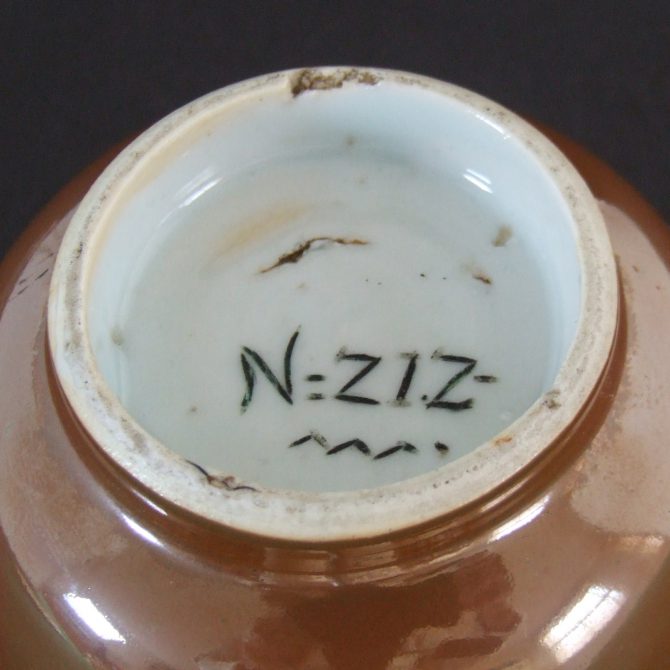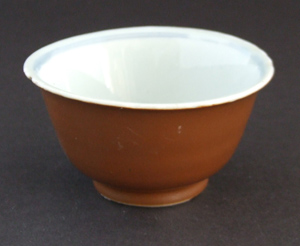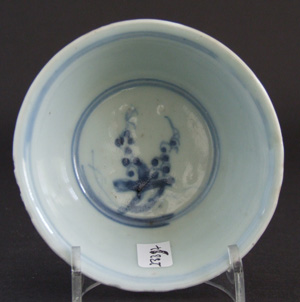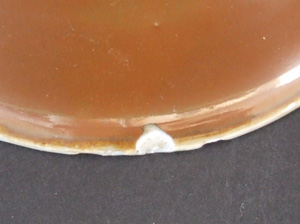
KANGXI 1662 – 1722 Chinese Export Porcelain
A Kangxi Batavia Ware Blue and White Teabowl from the Collection of Augustus the Strong (1670 – 1733). Late Kangxi c.1720. The Base with a Wheel Engraved Johanneum Inventory Mark, From The Royal Collection at The Japanese Palace, Dresden.
SOLD
- Condition
- One deep chip to the outer edge c.5 x 3mm. A very small amount of fritting.
- Size
- Diameter : 9 cm (3 1/2 inches)
- Provenance
- Augustus the Strong (1670 - 1733). The Royal Collection at The Japanese Palace, Dresden, Wheel Engraved Johanneum Inventory Mark N : 212 VV . This is under the heading `Blue and White East India Porcelain`, Chapter II. `Tea and Coffee Things and Accessories`. This was teabowl was entered in the inventory in 1721.
- Stock number
- 23397
Information
Batavia Ware :
Iron-oxide is possibly the most important colouring agent for glazes and it has been used in many ways over thousands of years to decorate Chinese ceramics. By controlling oxygen levels in the kiln as well as the amount of iron used in the glaze, a large variety of colours can be achieved. High concentrations of iron-oxide, around 5%, were used to colour the glaze to the deep rich brown that has become known as Batavia Ware, named after the V.O.C. trans-shipping town, rather than where the porcelain was made. The colour was added in the form of iron filings, occasionally one or two of them can be seen in the glaze. A Lesser amounts of iron-oxide would give the paler glaze colour known as Cafe au Lait. Both these glazes were used in conjunction with Blue and White, Famille Verte, Famille Rose as well as Imari decoration and were used on Chinese export ware during the 18th century.
Augustus The Strong :
Augustus II (1670-1733) King of Poland and Elector of Saxony known as Augustus the Strong. Augustus`s great physical strength earned him the nicknames `the Strong`, `Saxon Hercules` and `Iron Hand`. He liked to show that he lived up to his name by breaking horse shoes with his bare hands. His ancestor Cymburgis of Masovia was also noted for her strength. Augustus the Strong owed allegiance to the Imperial Habsburgs as a member of the Order of the Golden Fleece. Augustus the Strong owed allegiance to the Imperial Habsburgs as a member of the Order of the Golden Fleece. As Elector of Saxony, he is perhaps best remembered as a patron of the arts and architecture. He established the Saxon capital of Dresden as a major cultural centre, attracting artists and musicians from across Europe to his court. Augustus also amassed an impressive art collection and built fantastic baroque palaces at Dresden and at Warsaw. As a politician, he is nowadays not held in high esteem in Poland, getting blamed for embroiling the Polish-Lithuanian Commonwealth in the Great Northern War. His attempts at internal reforms and at bolstering the royal power are considered to have come to naught, while his policies are said to have allowed the Russian Empire to strengthen its influence over the Polish-Lithuanian Commonwealth.
The Japanisches Palais (Japanese Palace):
The Japanese Palace is a Baroque building in Dresden, Germany, on the Neustadt bank of the river Elbe. Built in 1715, it was extended from 1729 until 1731 to store the porcelain collection of Augustus the Strong that is now part of the Dresden Porcelain Collection. However, it was never used for this purpose, and instead served as a library.


